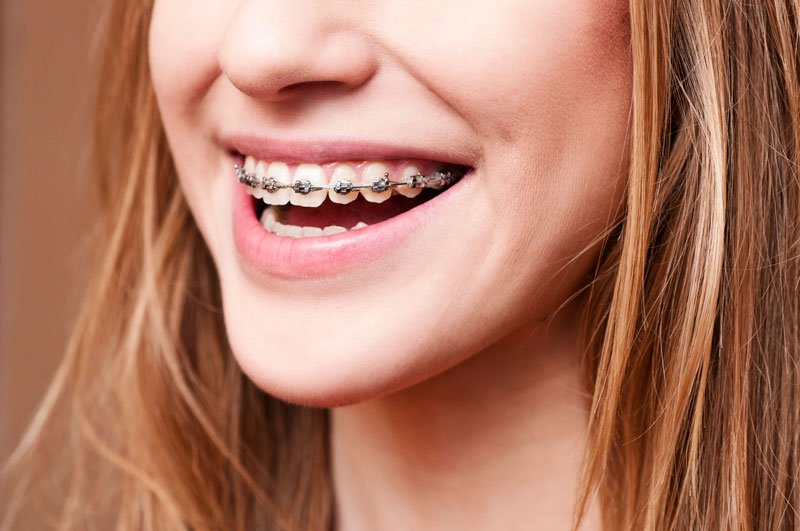Leading Tips for Selecting the most effective Cumming Orthodontist for Braces and Aligners
Leading Tips for Selecting the most effective Cumming Orthodontist for Braces and Aligners
Blog Article
Comprehensive Guide to Orthodontics Treatments for Fixing Dental Misalignments
Recognizing the intricacies of each procedure, including their mechanisms, advantages, and possible downsides, is crucial in making informed decisions about one's orthodontic therapy. As we browse with the extensive guide to orthodontic procedures for correcting oral imbalances, the complex details of each technique will unfold, losing light on the course toward a unified and practical dental positioning.
Orthodontic Procedures Summary

Along with conventional dental braces and clear aligners, orthodontists may additionally suggest other treatments like headgear, palatal expanders, or retainers to resolve certain alignment concerns (cumming braces). These procedures are customized to each client's unique demands and may entail a combination of treatments to achieve the wanted outcomes. Regular changes and monitoring are critical parts of orthodontic treatment to ensure development gets on track and to make any kind of required adjustments along the means. By undergoing orthodontic procedures, individuals can not just achieve a straighter smile however additionally boost their overall dental wellness and feature.
Traditional Braces: Just How They Function
When thinking about orthodontic treatments for dental misalignments, traditional braces stand out as a reliable method for dealing with teeth positioning. Conventional dental braces consist of brackets, cords, and bands that work with each other to use continuous stress on the teeth, gradually moving them right into the desired positioning.
One trick aspect of exactly how typical braces work is the procedure of bone remodeling. As pressure is put on the teeth via the braces, the bone surrounding the teeth is improved to support the new tooth placements. This improvement is essential for the lasting security of the fixed positioning. People will need normal adjustments at the orthodontist's office to guarantee the dental braces remain to use the proper pressure for reliable teeth activity.
Invisible Aligners: Pros and Disadvantages
These clear, customized trays are practically invisible when put on, making them an attractive option for people seeking a much more aesthetically pleasing orthodontic therapy. Individuals can eliminate the aligners prior to eating or cleaning their teeth, lowering the threat of food getting stuck in the device and simplifying the cleansing process.

Surgical Orthodontic Options
Surgical treatments in orthodontics present practical choices for resolving complex oral misalignments that may not be properly resolved through conventional orthodontic treatments. While undetectable aligners and standard dental braces can fix numerous orthodontic problems, certain instances call for medical treatment to accomplish optimal results. Surgical orthodontic alternatives are typically advised for serious malocclusions, considerable jaw discrepancies, and cases where the underlying bone useful reference framework requires adjustment to achieve proper placement.
One typical medical orthodontic procedure is orthognathic surgical treatment, which involves repositioning the jaws to correct useful problems such as difficulty speaking or eating. This surgery is usually carried out in collaboration with an orthodontist who helps straighten the teeth before and after the treatment. Surgical orthodontics may additionally include procedures to reveal impacted teeth, get rid of excess gum cells, or reshape the jawbone to develop a more unified facial account.
Prior to taking into consideration surgical orthodontic choices, individuals go through a detailed analysis to identify the need and prospective benefits of such treatments. cumming orthodontist. While surgery may appear overwhelming, it can substantially boost both the function and aesthetics of the smile in situations where standard orthodontic treatments fail
Retainers and Post-Treatment Treatment

Post-treatment care includes adhering to the orthodontist's guidelines vigilantly. This might consist of proper dental health practices, going to follow-up consultations, and putting on the retainers as suggested. Failure to abide their explanation by post-treatment treatment guidelines can result in relapse, where the teeth gradually move back towards their original settings. Constant retainer wear, excellent dental health, and normal oral exams are important for preserving the results accomplished with orthodontic surgical treatment and ensuring the long-term stability of the corrected dental alignment.
Final Thought
In conclusion, orthodontic procedures provide numerous choices for dealing with dental imbalances. Surgical orthodontic choices are available for a lot more extreme misalignments. On the whole, orthodontic procedures can properly enhance oral health and wellness and visual appearance.
As we browse through the thorough guide to orthodontic treatments for fixing oral misalignments, the complex information of each method will certainly unravel, dropping light on the course toward a unified and functional dental placement. - cumming invisalign
One of the most common orthodontic treatments is the usage of dental braces, which consist of steel braces and cables that use mild pressure to gradually move teeth right into the desired position.When thinking about orthodontic therapies for oral imbalances, conventional braces stand out as a reliable technique for correcting teeth positioning. Furthermore, undetectable aligners might not be ideal for intricate orthodontic issues that require more considerable teeth activity, as they are usually suggested for moderate to modest instances. Retainers are personalized orthodontic tools designed to hold teeth in their fixed settings dental dictionary after the conclusion of orthodontic therapy.
Report this page